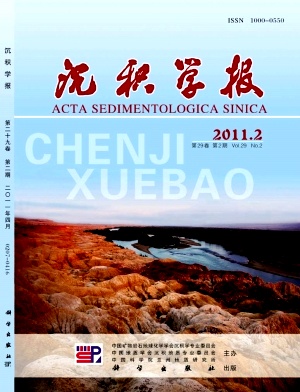Analysis on the Sedimentation Rates and Depositional Environment of the Pearl River Delta Area Since Holocene
- Received Date: 1900-01-01
- Rev Recd Date: 1900-01-01
- Publish Date: 2011-04-10
-
Key words:
- Pearl River Delta Area
Abstract: To explore the spatial and temporal evolution of sedimentation in the Pearl River Delta Area (PRDA) since Holocene, the PRDA is divided into 12 subregions, and the evolution history is distinguished into 4 stages. Sedimentation rates of 92 cores were calculated for representing different subregions and evolution stages. The obtained sedimentation rates are 1.27 mm/a, 2.34 mm/a, 1.94 mm/a, 2.27 mm/a in 10.0~7.5 ka BP, 7.5~5.0 ka BP, 5.0~2.5 ka BP, 2.5~0 ka BP, respectively. Maximum rate occurred in 7.5~5.0 ka BP and minimum rate occurred in 10.0~7.5 ka BP. The depocenters were found to be located in the middle area, rather than only at the mouth of the paleoestuary bay, which is quite different from the normal pattern established in many estuaries. Maximum and minimum rates during different statges were caused by differences in sealevel rise and accommodation space; Since 2 500 a B P, human activities have increased the sediment amount discharged into the bay, but the dispersal to the offshore was also increased by the formation of river network and limitation of the accommodation space relative to the supply. Therefore the largest sedimentation rate was not situated then, contrary to the preexisting understanding. The existence of multiply depocenters in the paleoestuary bay indicated a new evolution pattern of the delta that several sand bodies progradated multidirectionally and simultaneously. This is much different from several largescale delta systems in the world that propagate seaward unidirectionally.
| Citation: | WEI Xing. Analysis on the Sedimentation Rates and Depositional Environment of the Pearl River Delta Area Since Holocene[J]. Acta Sedimentologica Sinica, 2011, 29(2): 328-335. |






 DownLoad:
DownLoad: